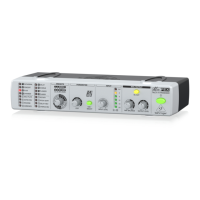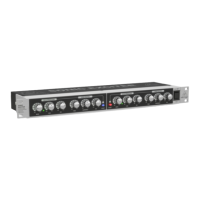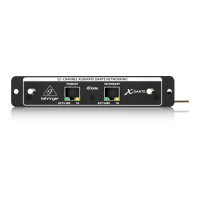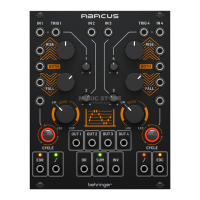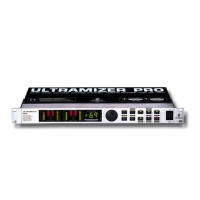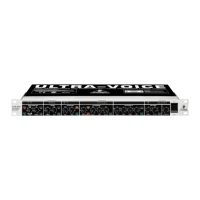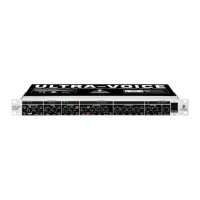27
MODULIZER PRO DSP1224P
Unbalanced use of
mono 1/4" jack plugs
Ring
Balanced use of
stereo 1/4" jack plugs
Balanced use with XLR connectors
1 2
3
2 1
3
Input
Output
Tip =
Signal
Tip =
hot (+ve)
Sleeve =
Ground / Shield
Sleeve =
Ground / Shield
Tip
Tip
Sleeve
Sleeve
Strain relief clamp
Strain relief clamp
Ring =
cold (-ve)
For connection of balanced and
unbalanced plugs, ring and sleeve have
to be bridged at the stereo plug.
1 = Ground / Shield
2 = hot (+ve)
3 = cold (-ve)
For unbalanced use pin 1 and pin 3 have to be bridged
Fig. 4.1: Different plug types
4.4 MIDI connections
The MIDI (Musical Instruments Digital Interface) standard was developed in the early 1980s to allow electronic
musical instruments from different manufacturers to communicate with each other. The use of MIDI has devel-
oped over the intervening years to the stage where it is now common to find complete recording studios
operating entirely on a MIDI basis. The centerpiece in such a studio is usually a computer running a sequencer
software which not only controls various keyboards, samplers and sound modules, but can also run the
programming of outboard effect devices, typically digital reverberation and delay units. The MODULIZERPRO
may be controlled in real time in this studio environment.
The MIDI connectors found on the rear panel are of the universally used 5 pin DIN type. You require suitable
MIDI cables to connect the MODULIZERPRO to other MIDI devices. Normally complete cables will be pur-
chased for this use, you can of course make your own, using a high quality cable with two cores and shielding
(like microphone cable), with as connectors two good 180 degree DIN plugs. Pin 2 (center) is connected to the
cables shield, pins 4 and 5 (left and right next to 2) carry the two cores, pins 1 and 3 are not used. MIDI cables
should have a maximum length not exceeding 45 feet.
4. INSTALLATION
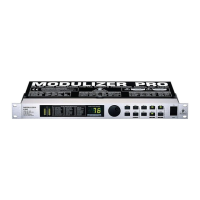
